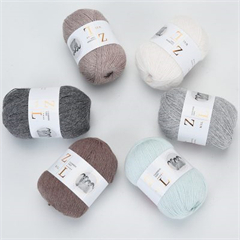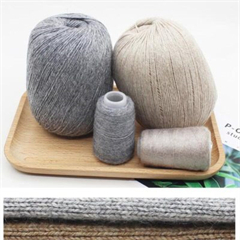Knitting is a versatile and enjoyable craft that allows you to create a wide range of beautiful items, from scarves and blankets to sweaters and hats. If you’re a beginner looking to get started with knitting, here’s a step-by-step guide to help you begin your knitting journey:
1. Gather Your Supplies:
- Knitting Needles: Start with a pair of medium-sized needles (around US size 8 or 9) and choose straight needles or circular needles, depending on your preference.
- Yarn: Select a smooth, medium-weight yarn in a light color for better visibility of your stitches.
- Scissors: You’ll need scissors to cut the yarn.
- Tapestry Needle: This needle is used for weaving in loose ends and finishing your projects.
- Measuring Tape: Helpful for checking gauge and measuring your work.
- Stitch Markers (optional): These are used to mark specific stitches or sections of your knitting.
2. Learn the Basic Knitting Techniques:
- Casting On: This is the first step in starting a knitting project. There are various methods for casting on, but the long-tail cast-on is a common choice for beginners.
- Knit Stitch (K): The knit stitch is the most basic knitting stitch. It forms a smooth fabric and is often the first stitch beginners learn.
- Purl Stitch (P): The purl stitch is another fundamental stitch. It creates a bumpy texture on the opposite side of the knit stitch.
- Binding Off (Casting Off): This is the process of finishing your knitting project and securing the stitches.
3. Practice Your Tension:
- Knitting tension refers to the tightness or looseness of your stitches. Consistent tension is crucial for achieving even, professional-looking results.
- Experiment with different hand positions and yarn tension to find what feels comfortable for you.
4. Start with a Simple Project:
- As a beginner, start with a straightforward project like a scarf or a dishcloth. These projects typically involve basic knit and purl stitches.
- Follow a beginner-friendly knitting pattern or video tutorial to guide you through the steps.
5. Read Patterns and Charts:
- Knitting patterns provide instructions for creating specific items. Learn to read and understand pattern abbreviations, instructions, and charts.
- Start with simple patterns and gradually progress to more complex ones as you gain confidence.
6. Fix Mistakes:
- Mistakes are common in knitting. Learn how to fix common errors like dropped stitches and accidental increases or decreases.
7. Take Breaks:
- Knitting can be relaxing, but it’s essential to take breaks to prevent hand strain or discomfort.
8. Join a Knitting Group (Optional):
- If possible, consider joining a local knitting group or an online knitting community to connect with other knitters, share experiences, and seek help when needed.
9. Finishing Touches:
- Once you’ve completed your project, weave in loose ends using a tapestry needle and block your work if necessary to give it a polished appearance.
10. Keep Learning:
- Knitting offers endless opportunities for learning and improving your skills. Explore new stitches, techniques, and project types to keep your knitting journey exciting and fulfilling.
Remember that knitting is a skill that improves with practice, so be patient with yourself as you start your knitting adventure. With time and dedication, you’ll be able to create beautiful, handcrafted items to enjoy or share with others. Happy knitting! 























